Synthesis in Supercritical CO2
Polymer synthesis and processing in supercritical CO2.
In these projects, we exploit the gas-like diffusivity and solvent-like solubilising power of supercritical CO2 to design new and efficient means of processing and modifying polymers.
1. Biocatalytic polymerization in supercritical CO2
We and others have recently shown that by merging the two green technologies of enzymatic catalysis and scCO2, polymers can be synthesised very easily that are difficult to make using other, more conventional methodologies. This is because the scCO2 improves the diffusivity of small molecules allowing much greater access to the active site of enzymes, while the solvent plasticises poorly soluble polymers allowing synthesis to a much higher molecular weight.2 This has been extensively described for polyesters, but never for polyamides.
Recently, Loos and coworkers showed that β-lactam can be successfully ring-opened to low molar mass using Candida Antarctica Lipase B (CALB, Novozym-435). The biggest problem with obtaining high molecular weight materials was reported as the low solubility of the polylactam in the solvent upon enzymatic ring opening polymerization (eROP). We aim to use the highly versatile properties of supercritical CO2 to overcome these solubility issues. A schematic of the reaction is shown below.
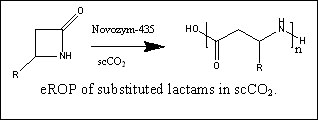
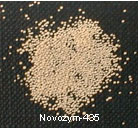
Our group uses high pressure autoclaves (developed at the University of Nottingham) and view cells with sapphire windows to monitoring the reaction process. A picture of the view cell is shown below.
2. Polymer-drug composites in Supercritical CO2 – microparticle synthesis
A recent editorial in Nature1 noted that unrelieved pain is a large area of unmet need that has a major negative effect on the lives of millions of people worldwide. As this same point was made in an article published in Nature five years ago2, it is clear that breakthroughs in pain therapeutics have been slow in coming and that novel and more effective analgesic treatment strategies are desperately needed.
In this project we aim to develop materials for delivery of therapeutic agents to the spinal cord in a sustained manner over a period of time up to four weeks. The most appropriate carriers for such a sustained delivery are slowly-degrading polymeric particles.
The drug will be incorporated into polymer using scCO2 as either solvent or plasticizing agent, and this will subsequently be sprayed to form microparticles. The effect of drug concentration and processing parameters will be investigated with regard to drug-release profiles and deliverable dose. Below we show a picture of a high pressure particle formation rig (Helix) that was recently purchased from Applied Systems Inc. in the US.
3. Polymer Foaming in Supercritical CO2
Supercritical CO2 is also being applied to the manufacture of biopolymer foams. These polymers will be used as scaffolds for regeneration of bone tissue in the jaw bone, and for the formation of artificial arteries within the peritoneal cavity of humans.
In this project foams of biodegradable polyesters are being prepared for use as tissue scaffolds. These foams are being characterised by a number of methods, including DSC, SEM, NMR and MRI. The images below show MRI images of foamed poly(caprolactone) (PCL), illustrating the changes in morphology afforded through control of the foaming pressure.
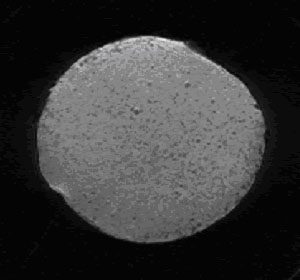
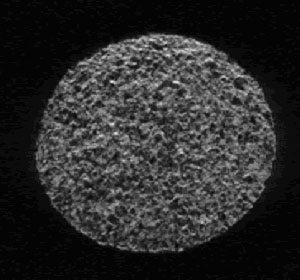
NMR images of PCL formed by swelling with CO2 at pressures of 50 bar (left) and 500 bar (right).
Control over foam properties can be obtained through variations in the pressure of gas, soaking temperature, and for particulate leaching, the size and concentration of salt particles. The salt particles are removed after foaming by extensive washing with water, resulting in foams with open-cell morphology.
4. NMR in Supercritical CO2
The critical point for CO2 is 31.0 oC and 73.8 bar, both readily achievable with relatively inexpensive laboratory equipment. We have followed the work of Scott Wallen at UNC in manufacturing a high-pressure NMR cell from PEEK, a tough non-permeable thermoplastic. The cell is shown below.
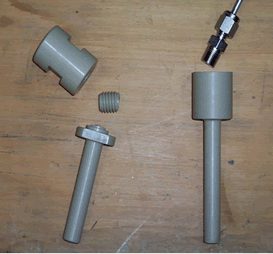
High-pressureNMR cells constructed from PEEK. The design on the left was taken from Wallen et al. 2000, Analytical Chemistry, 72, 4230. On the right is our design which was able to withstand up to 600 bar of pressure.
We are able with this cell to measure swelling and transport in various materials using 1H or 19F NMR and MRI.
Other projects are in progress with Assoc Prof Darren Martin and Prof Pete Halley within the AIBN.
Collaborators
Prof Steve Howdle, University of Nottingham
Prof Maree Smith, TetraQ, University of Queensland
Source of funding
ARC DP0880032, LP0990817
Point of contact: Kris Thurecht or Andrew Whittaker
